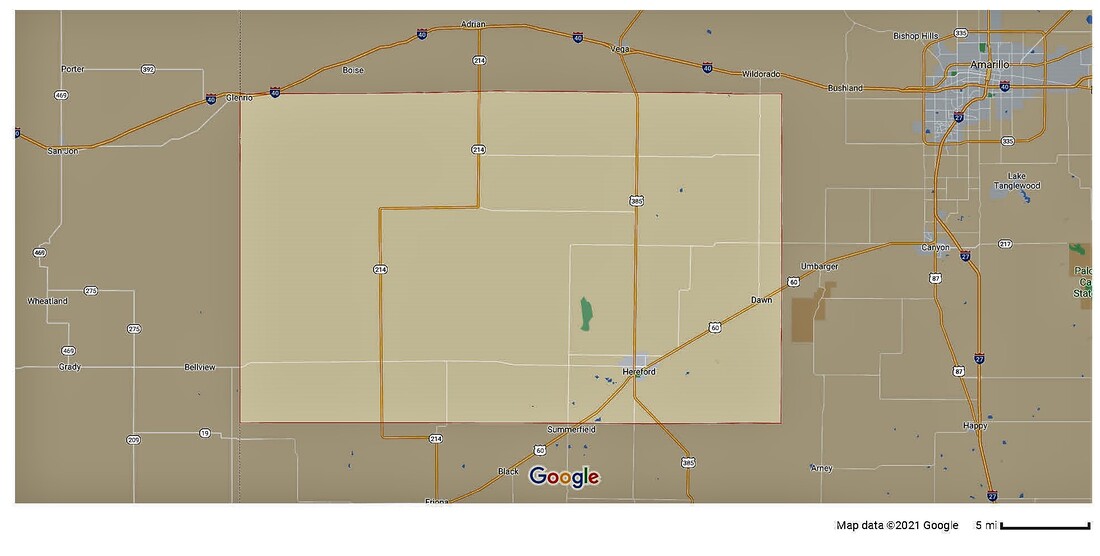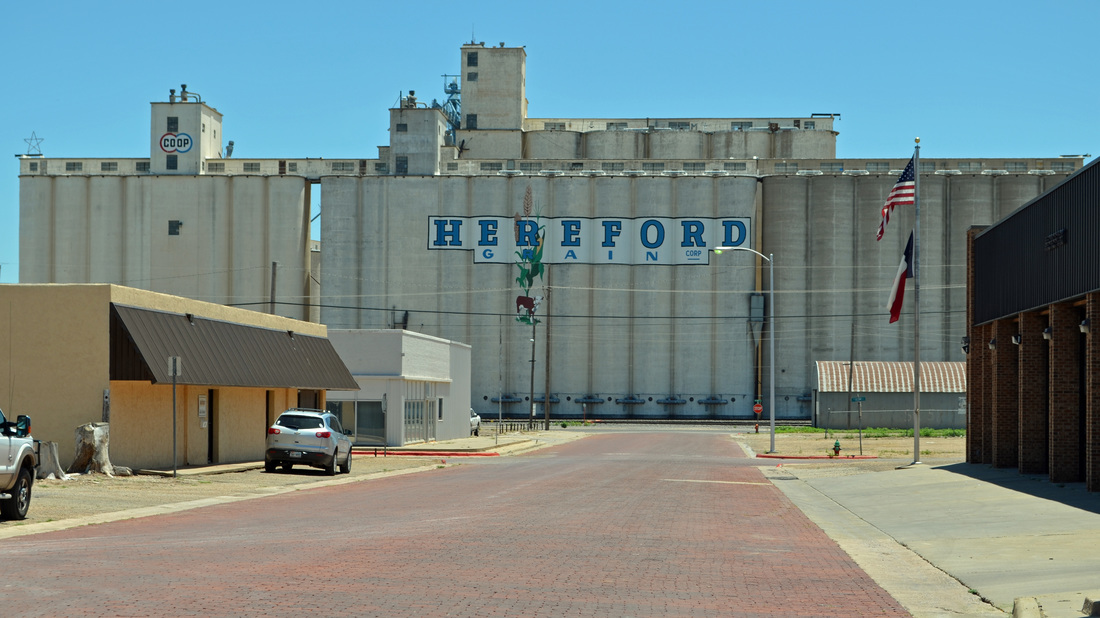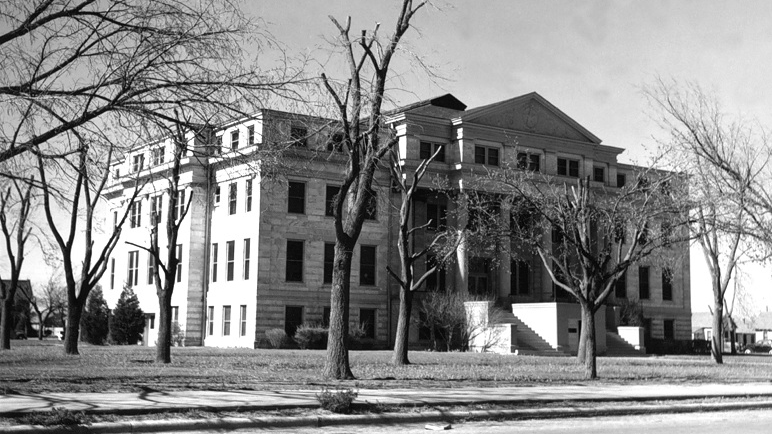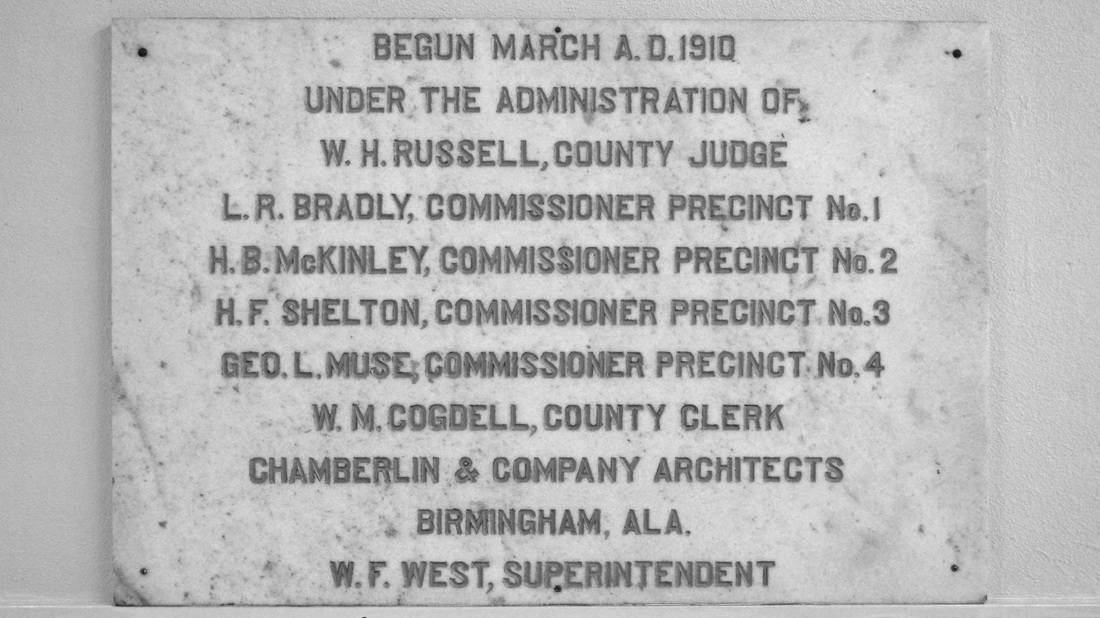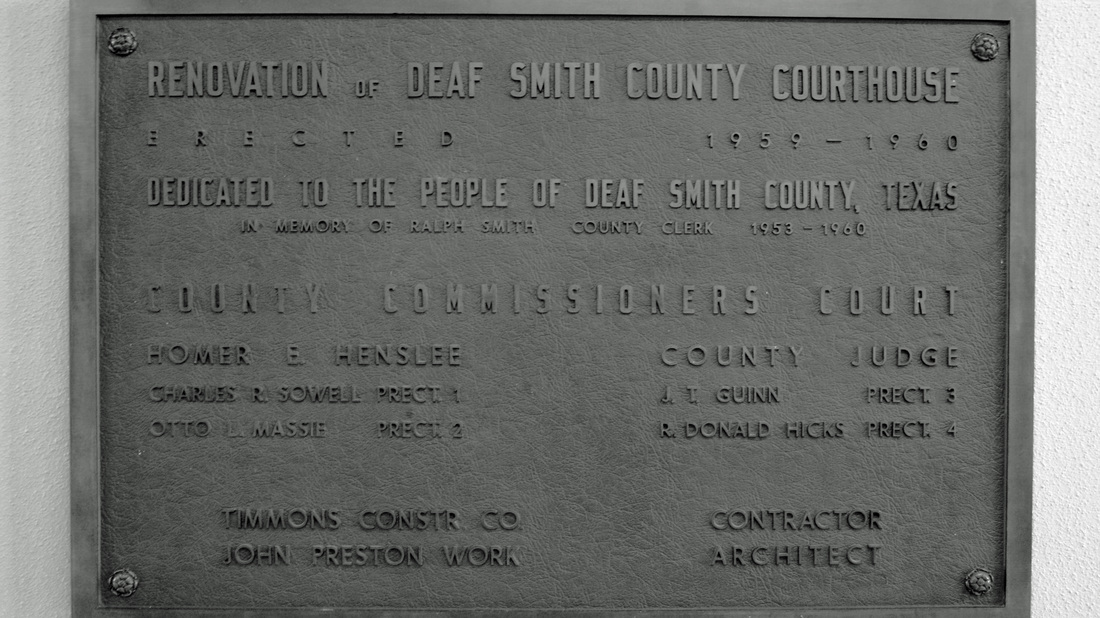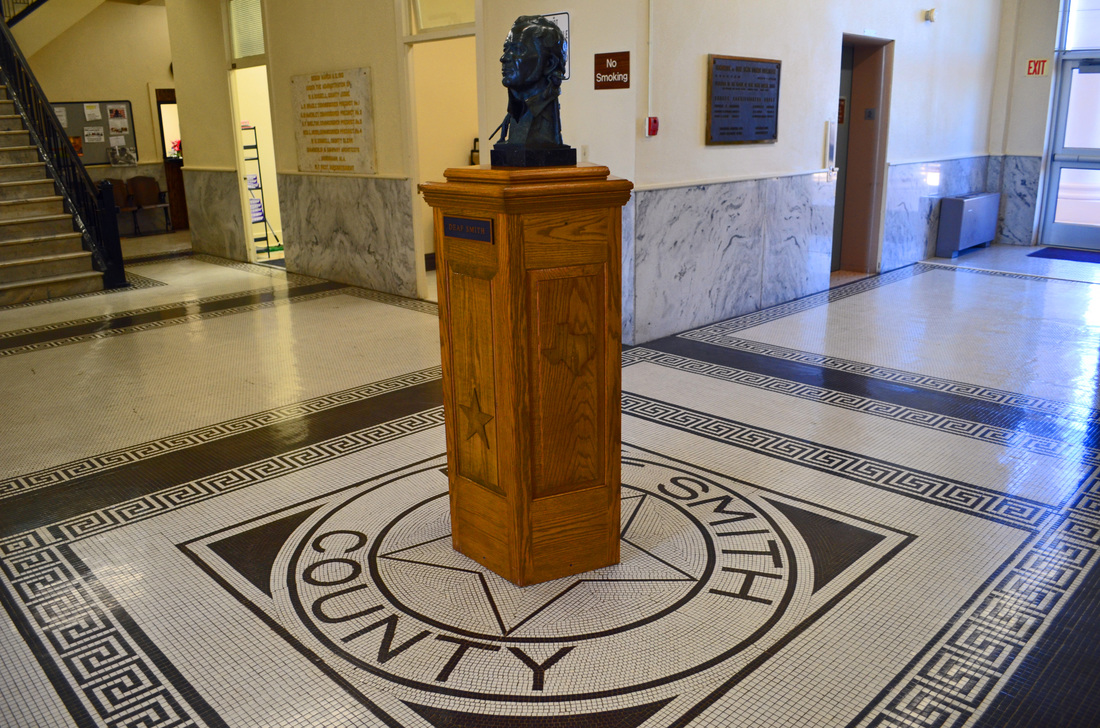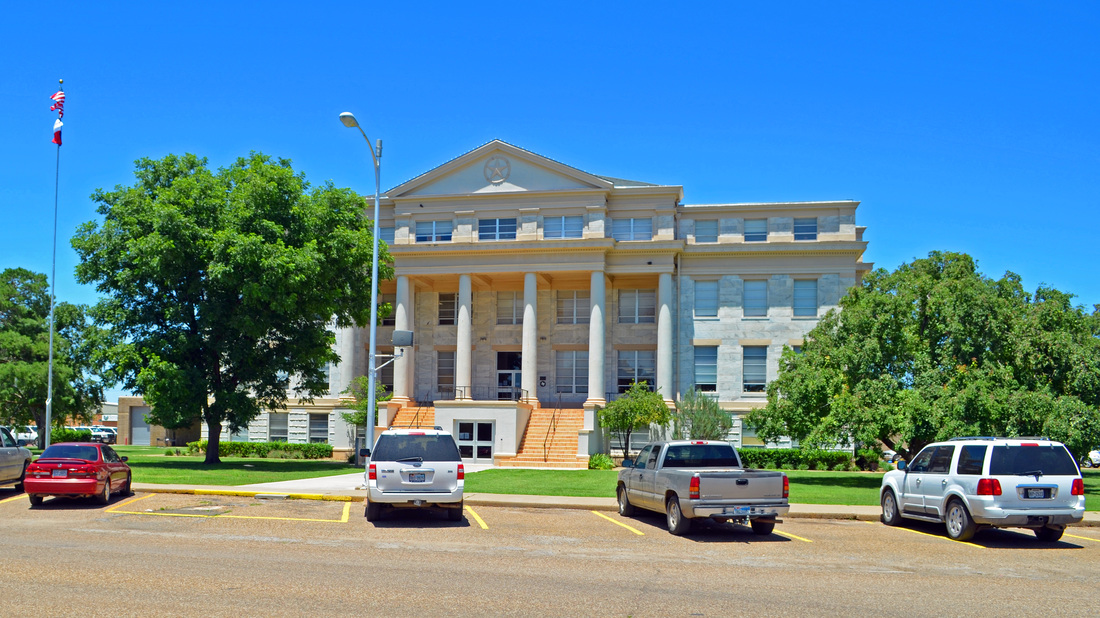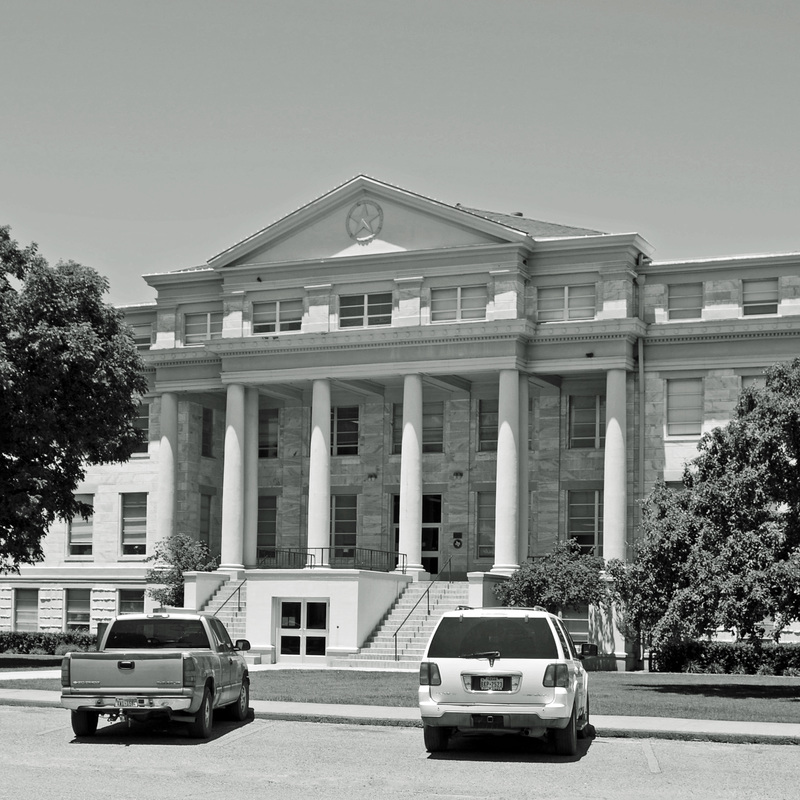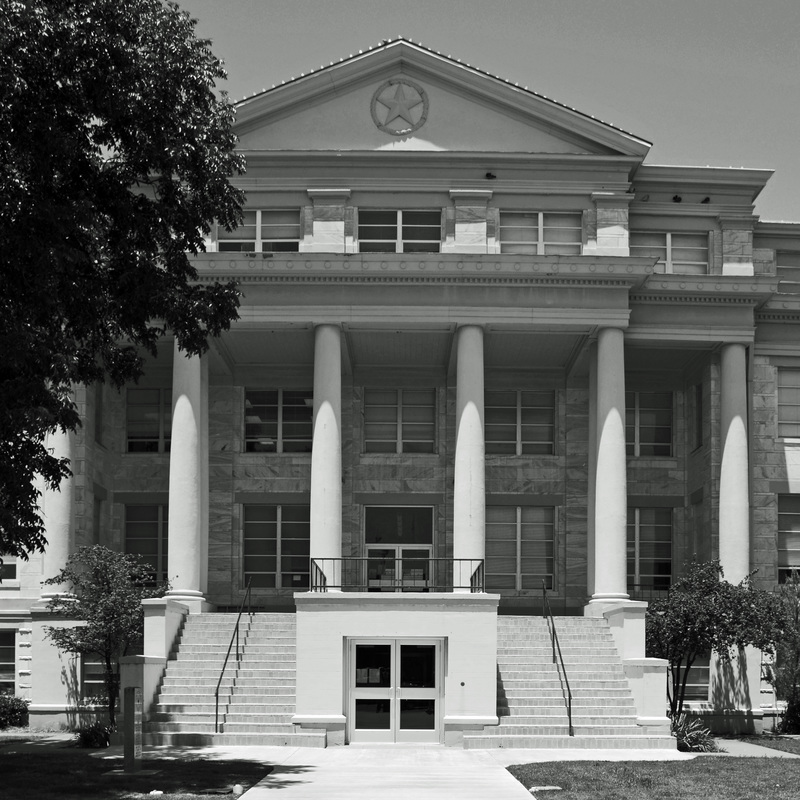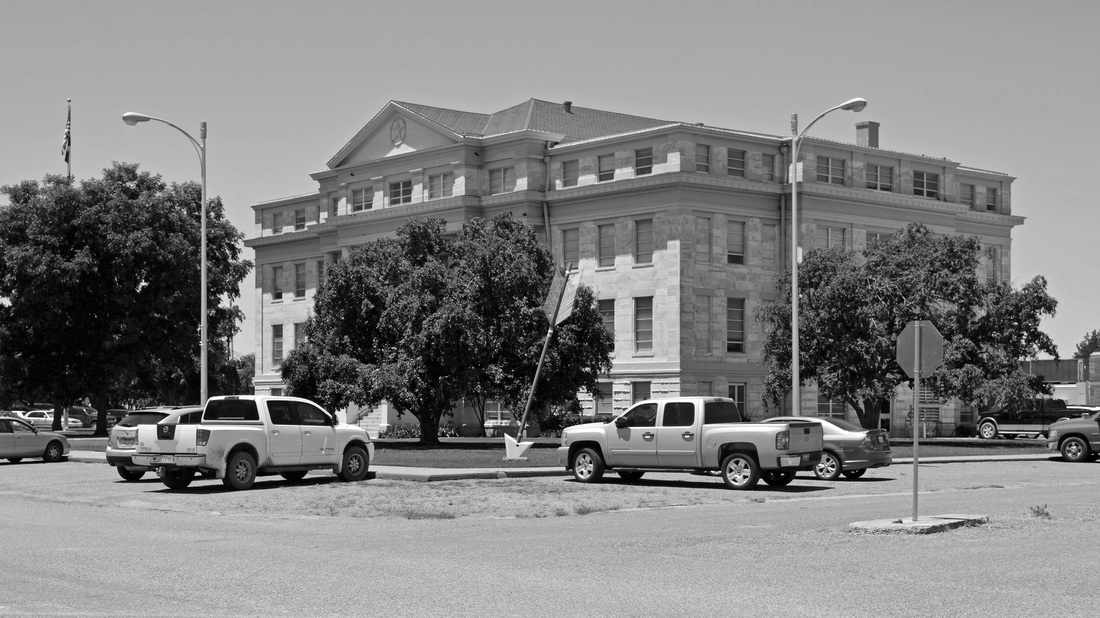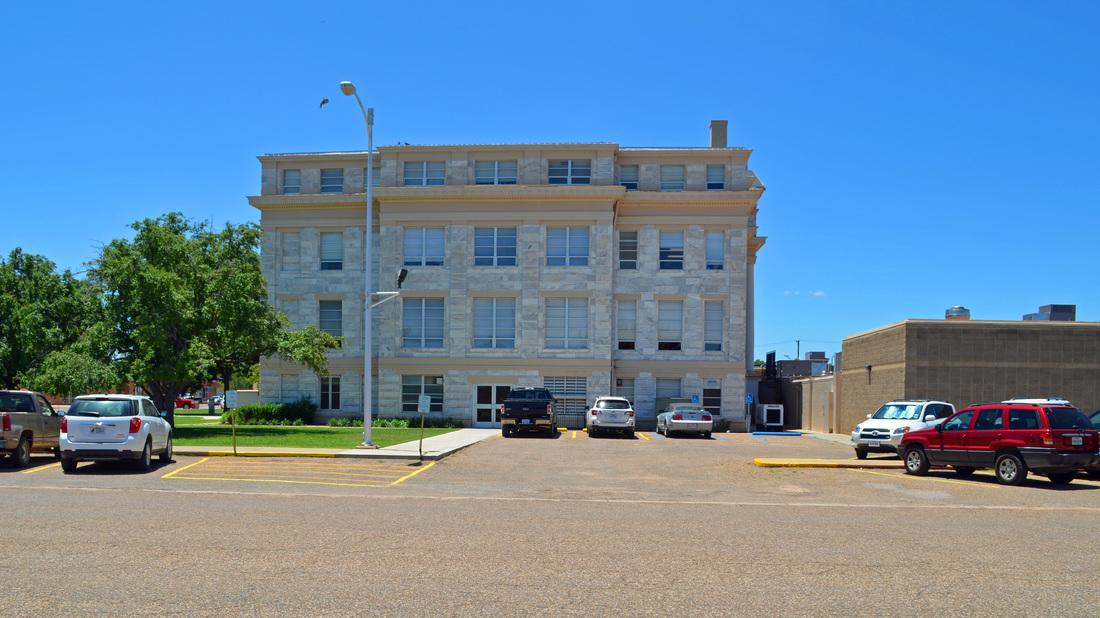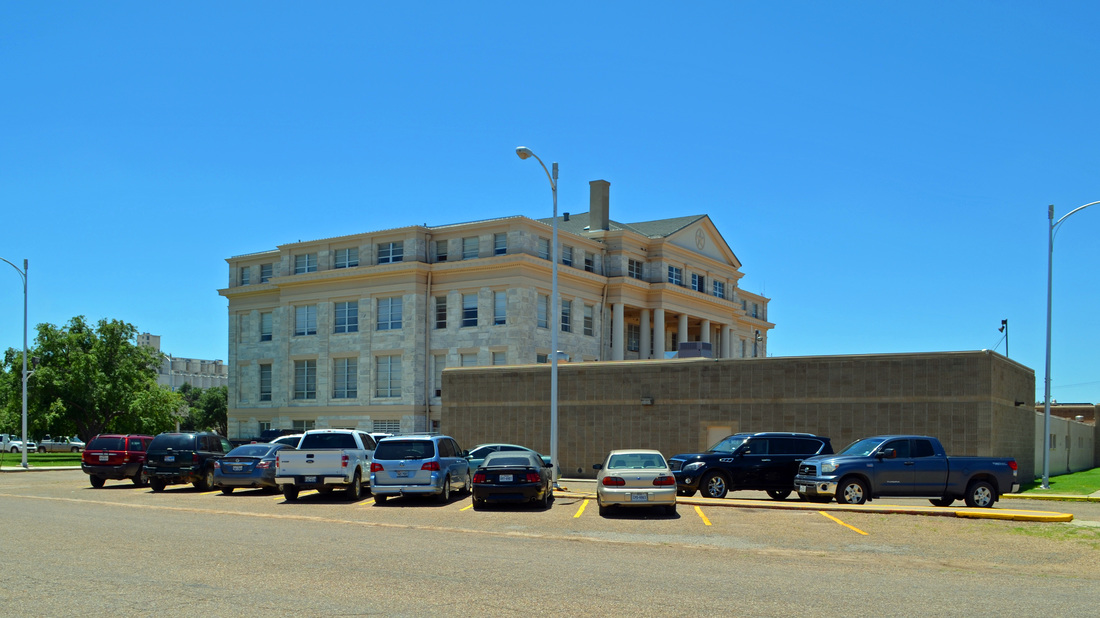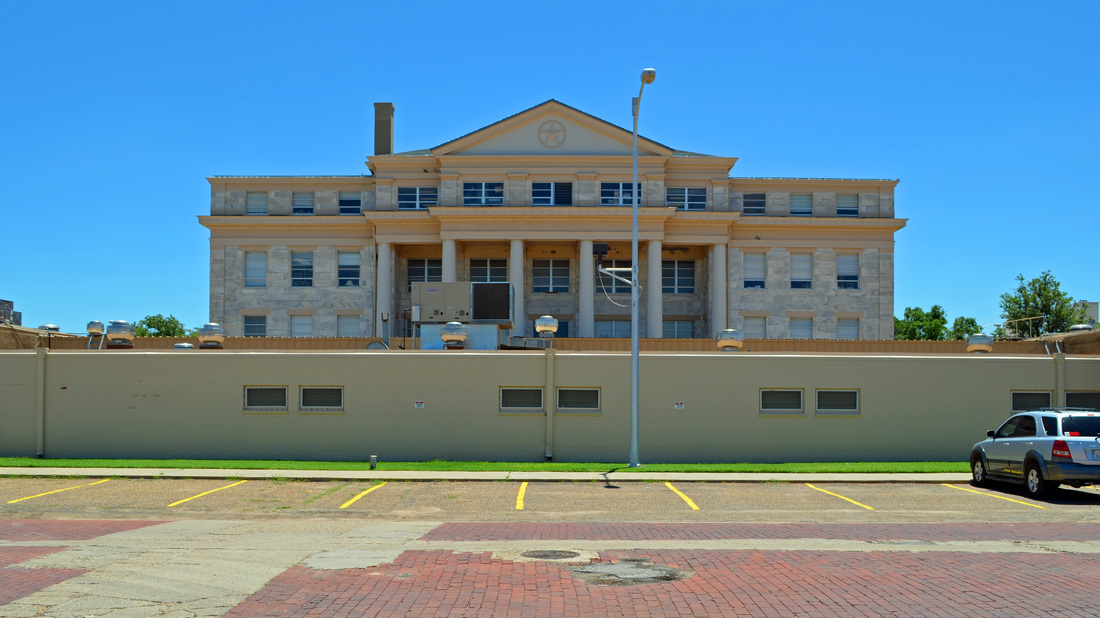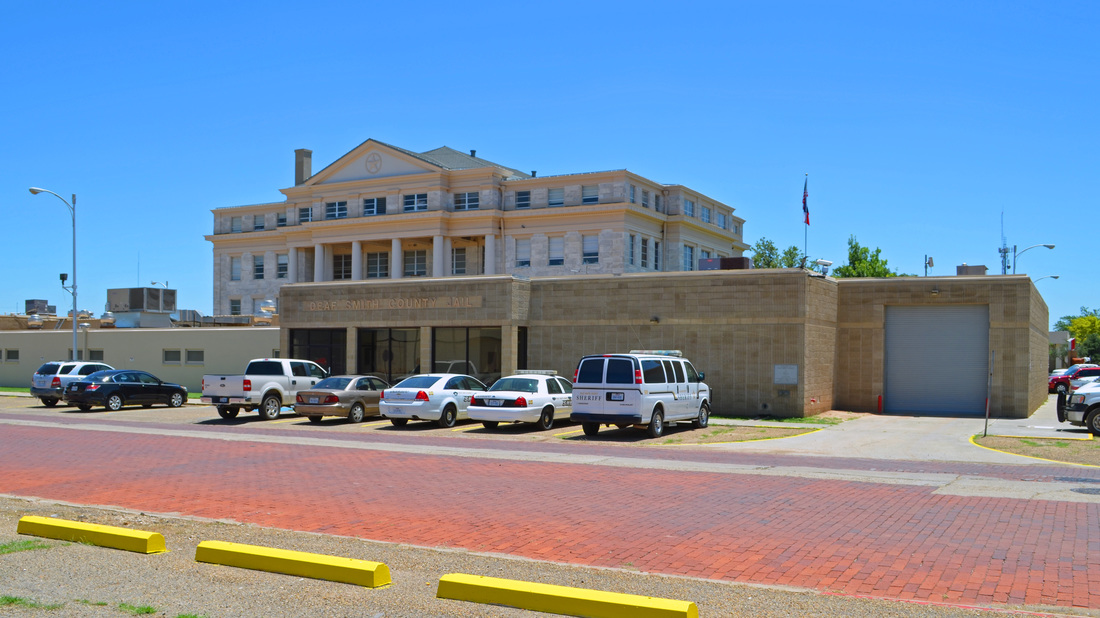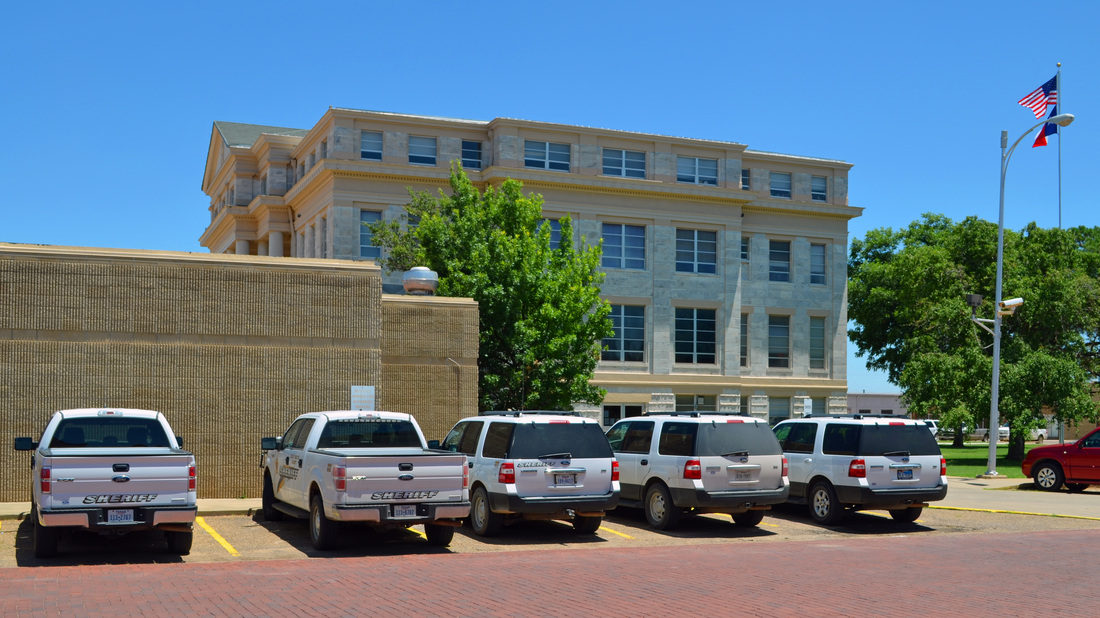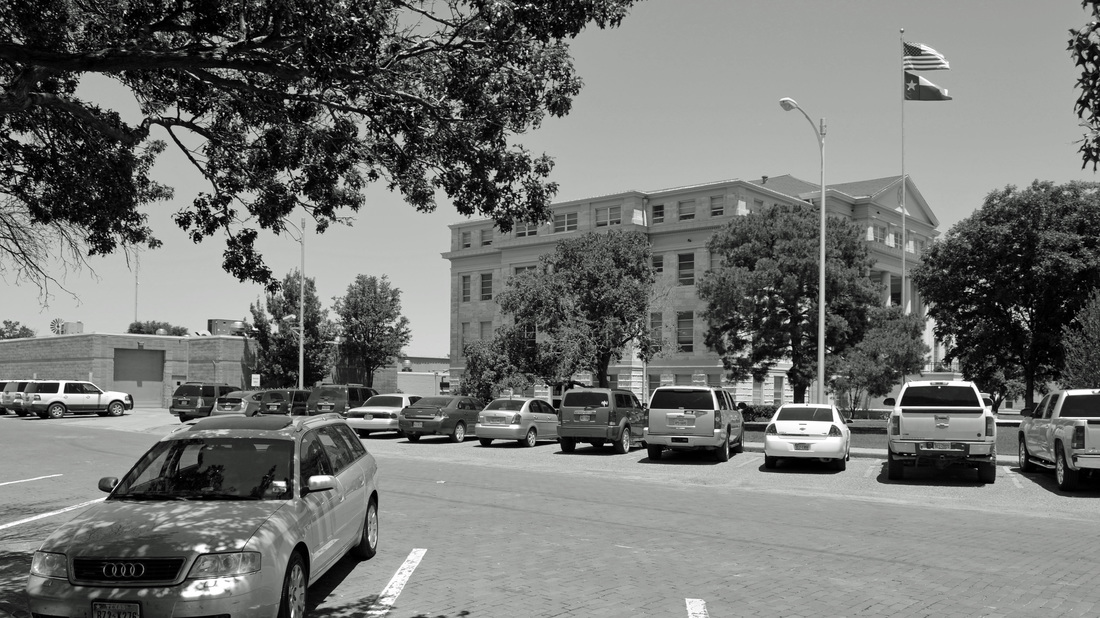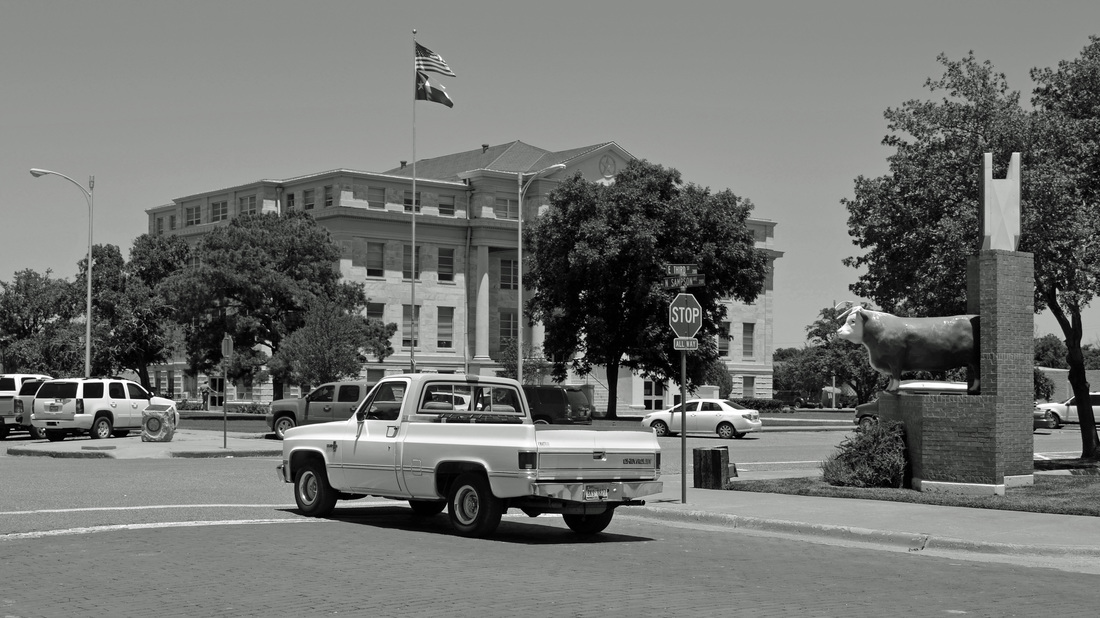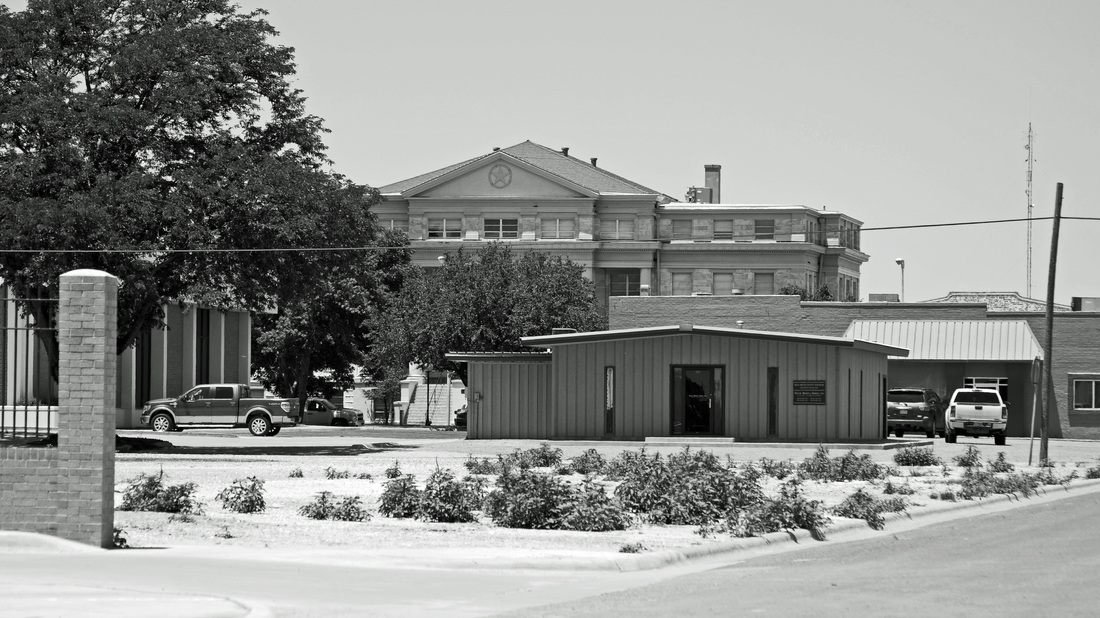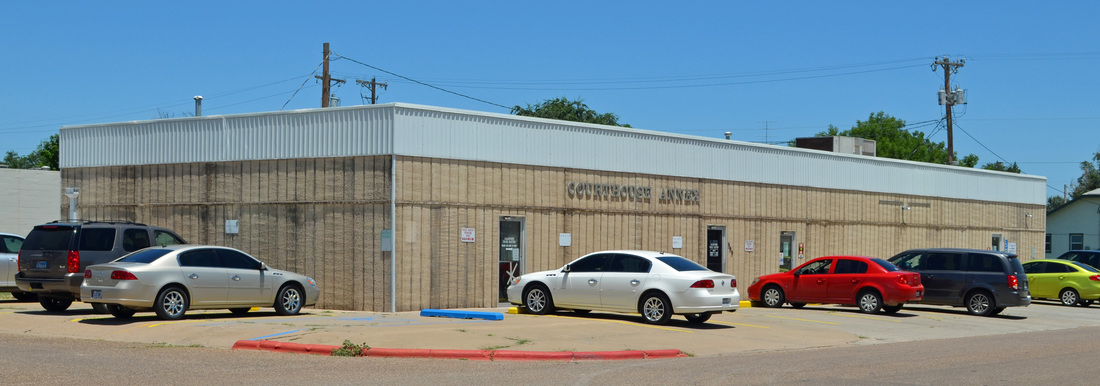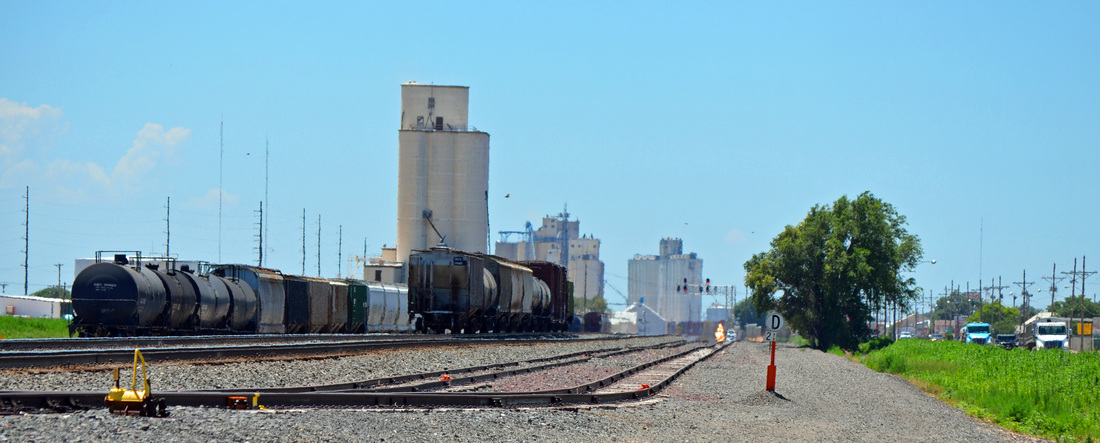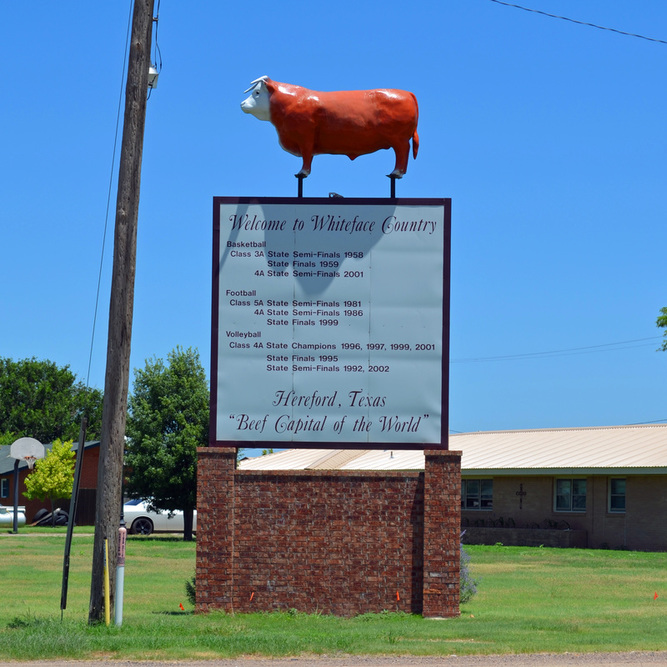228 of 254 Deaf Smith County Courthouse, Hereford, Texas. County Population: 19,372
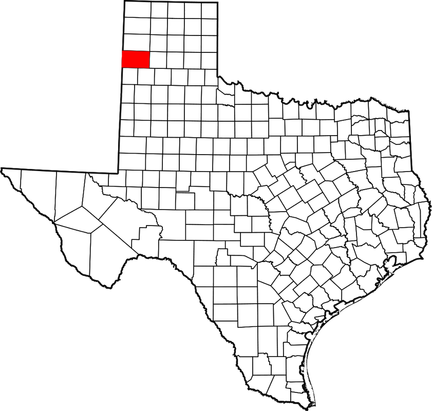 Deaf Smith County, Texas
Deaf Smith County, Texas
"Deaf Smith County, on the western edge of the Panhandle, is bounded on the west by New Mexico, on the north by Oldham County, on the east by Randall County, and on the south by Parmer and Castro counties. It was named for Erastus "Deaf" Smith, a famous scout of the Texas Revolution. Deaf Smith County comprises approximately 1,497 square miles of level prairies and rolling plains on the western edge of the Llano Estacado. Elevations range from 3,200 to 4,200 feet above sea level.
"In 1876 the Texas legislature formed Deaf Smith County from the Bexar District. The census counted thirty-eight people in the county in 1880. As the cattle industry in the county developed, the rising population created a need for local government. Accordingly, after an election on December 1, 1890, the county was organized with the new town of La Plata as county seat.
"In 1898 the Pecos and Northern Texas Railway, a subsidiary of the Santa Fe line, built tracks from Amarillo to the Texas-New Mexico border at Farwell. This railroad crossed the southeastern corner of Deaf Smith County and brought easy and economical transportation to the local ranchers. The coming of the railroad also brought forth a new town, Hereford, which quickly outstripped the other local hamlets. As a result Hereford became the county seat after an election on November 8, 1898, and La Plata soon faded into oblivion. By 1900 the county had ninety-seven ranches and farms and a population of 843."
H. Allen Anderson, "DEAF SMITH COUNTY," Handbook of Texas Online
"In 1876 the Texas legislature formed Deaf Smith County from the Bexar District. The census counted thirty-eight people in the county in 1880. As the cattle industry in the county developed, the rising population created a need for local government. Accordingly, after an election on December 1, 1890, the county was organized with the new town of La Plata as county seat.
"In 1898 the Pecos and Northern Texas Railway, a subsidiary of the Santa Fe line, built tracks from Amarillo to the Texas-New Mexico border at Farwell. This railroad crossed the southeastern corner of Deaf Smith County and brought easy and economical transportation to the local ranchers. The coming of the railroad also brought forth a new town, Hereford, which quickly outstripped the other local hamlets. As a result Hereford became the county seat after an election on November 8, 1898, and La Plata soon faded into oblivion. By 1900 the county had ninety-seven ranches and farms and a population of 843."
H. Allen Anderson, "DEAF SMITH COUNTY," Handbook of Texas Online
I visited Deaf Smith County on Monday, July 13, 2015 and photographed the courthouse in Hereford.
